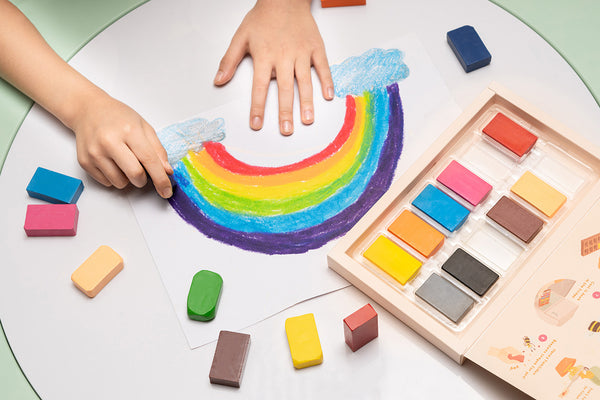WELCOME TO OUR STORE
Fostering Creativity in Children

We all want the best for our beloved children. More often than not, our main goals are focused on keeping children healthy and safe; teaching cognitive abilities such as color and shape recognition; and introducing basic math abilities. With all the time spent on these areas of interest, sometimes we miss the significance of nurturing children’s creativity.
As many may not be aware of, creative power can help children adapt and thrive in increasingly complex and uncertain times. The path to creative thinking isn’t a direct one, but there are a few pointers that can help us find our way. Here are some ways to foster children’s creativity.
1. Encourage “possibility thinking”
It is important to teach children to be more critical when encountering a problem or obstacle. We can stimulate them to ask as many questions as possible. This will shift children’s perspective from more traditional thinking to naturally thinking of creative options.
2. Set a clear and positive objective
It is strictly necessary to clarify the purpose of being creative. Teaching children to distinguish the difference between right and wrong behavior is essential, especially at their early age.
Some people can use their creativity for negative purposes; for instance, committing a crime. That is why it is important to discuss with children the main objectives of creativity and innovation.
3. Normalize making mistakes
Some studies show that children who are afraid to make mistakes are less likely to think creatively. Therefore, when children make mistakes, do not blame them immediately.
If your child shows disappointment at making mistakes, try saying things like “What can you do to change the aftermath?” or “How would you do this again in the future?”. Encourage them to look at mistakes as an opportunity for growth and not failures.
4. Stimulate creativity through art
Art is an opportunity for children to unleash their inner creativity. In art activities, children are given the freedom to shape the world as they see it, or as they simply wonder it can be. By providing children with various art activities, it will help then channel their imagination in so many ways and forms.
5. Be wary of giving praises and rewards
We may be tempted to reward our children for being creative, but keep in mind that praises might hinder a child’s independent thinking. That is because, in their minds, the activity may be associated with the reward, not the fun and process.
Moreover, try to be more specific when uttering praise, for example, instead of saying “you are so creative!”, try saying something like “I love the way you draw such a cute bird on the tree” or “I love the way you color this part”.
Regardless of the method we approach, we need to understand that children have their own pace in their learning process. As well as this, their personality also contributes to how they stimulate and channel their creativity.


